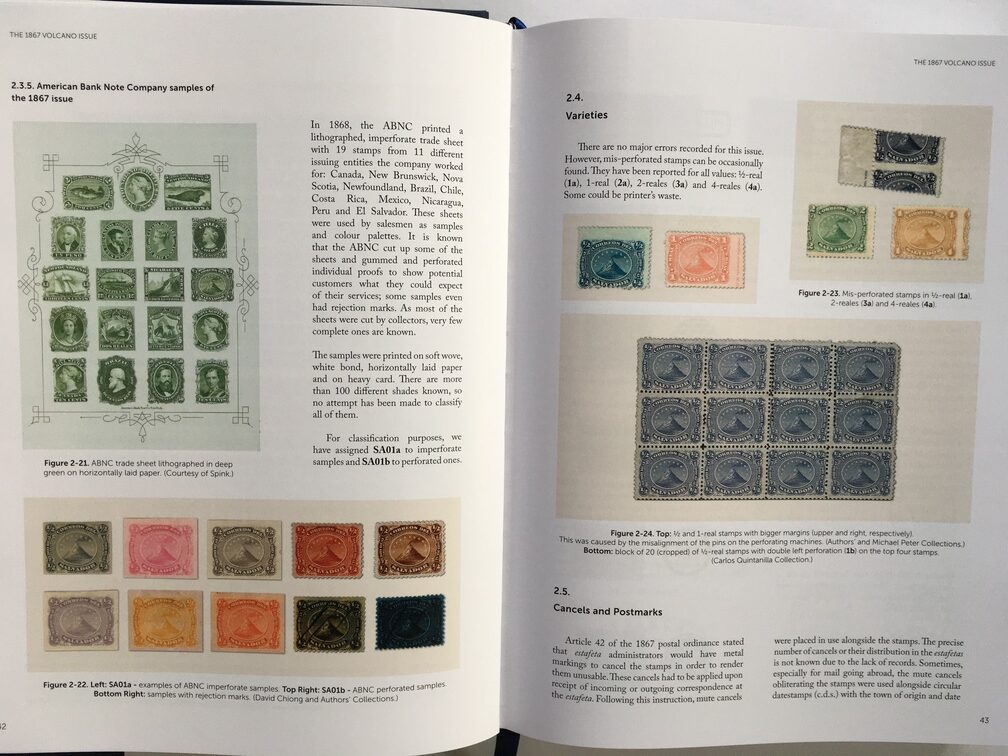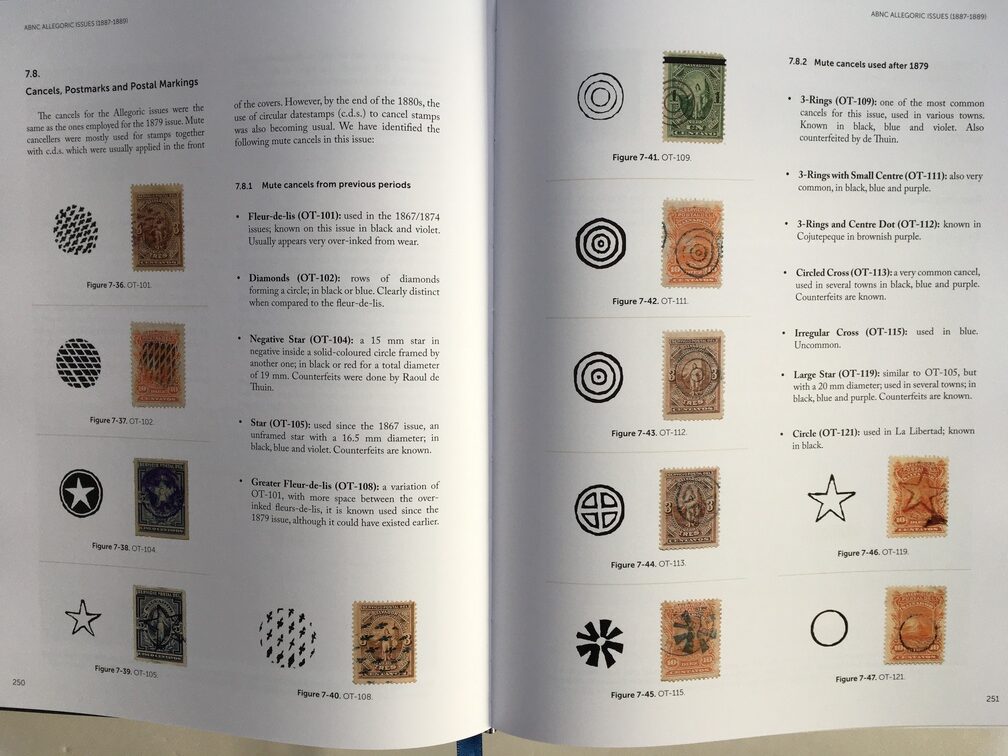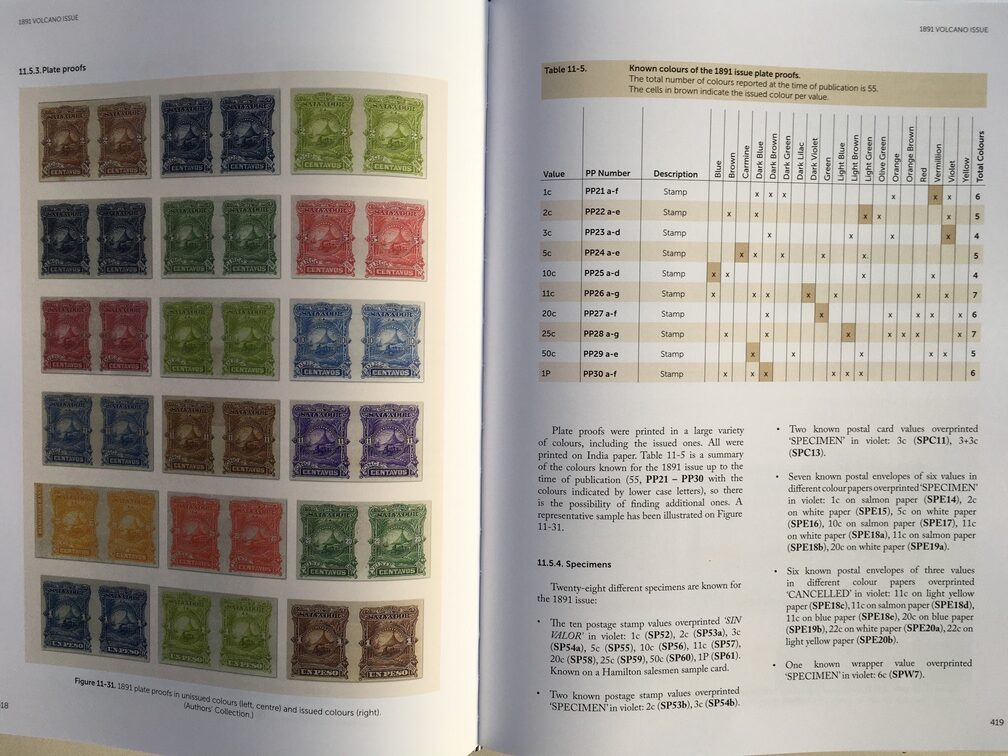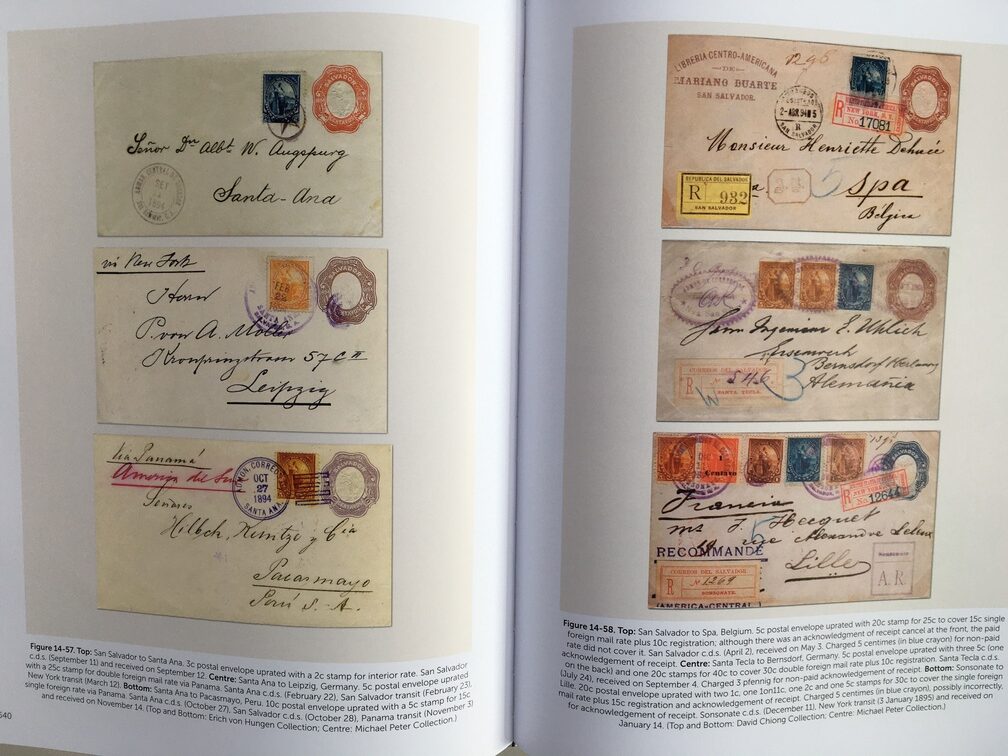
Many of the Latin American republics have had a variety of specialized catalogues and handbooks written over the years but El Salvador has not been one of them.
There has been a dearth of literature on the early philately of the country; certainly, various articles have appeared in specialist journals in the past but nothing that brought everything together in a comprehensive and contextual form.
Until now.
This is truly a magnificent volume, addressing all aspects of El Salvador’s output during the latter half of the nineteenth century.
With over two-thousand eight-hundred full colour images spread across nearly nine-hundred high-quality pages, it is a visual delight.
The authors have form, having previously written The Pre-stamp Period of El Salvador (1525 – 1866), published by the Collector’s Club of Chicago in 2015. This new volume thus continues El Salvador’s trajectory from the issuance of its first postage stamp in 1867.

The book discusses each issue in a chronological fashion, covering the relevant decrees, essays, proofs, specimens, varieties, cancellations, postmarks, forgeries and reproductions, together with a comprehensive review of the postal history with a large selection of different types of usage for each issue.
Commendably, postal stationery has been incorporated into the body of the text, rather than treated as a separate discipline and tucked away at the back of the book.
Thus the reader can appreciate the full philatelic landscape at any one moment in time and understand how stamp designs were adapted for postal cards and envelopes, together with the uprating of postal stationery with the stamps of the day.
Chapters on the postal system in El Salvador address the historical background, lists and locations of post offices and their administrators, routes, rates, maritime mail and more.

Late nineteenth century El Salvador is, of course, dominated by one man: Seebeck.
The former members of the Society for the Suppression of Speculative Stamps, Seebeck’s antagonists in the 1890’s, would be turning in their collective graves if they could witness the serious levels of philatelic study that are now being directed towards the Hamilton Bank Company’s output.
Over five-hundred pages are devoted to the Seebeck issues with a strong emphasis on the papers as a means of identification and in separating the originals from the reprints.
This a complex area with no less than eleven original and seventeen reprint papers identified. However, there are plenty of good tips on how to spot the originals and distinguish one printing from another.
Collectors of other ‘Seebeck countries’ will also find the data on papers useful in their own studies (Robert D’Elia & Douglas Armitage’s Ecuador: The Philately of the Seebeck Era is also recommended in this regard).

The myriad number of proofs and ‘colour trials’ are given detailed attention, allowing the philatelist to fully understand the rainbow of collecting possibilities.
Although prices for the die and composite proofs seem to have escalated in recent years, plate proofs can still be picked up for comparatively little and are certainly one of the most colourful collecting areas in nineteenth century philately.
Of particular use are the detailed descriptions and illustrations of forgeries, notably the 1889 overprints and the wheel handstamps of 1898/99. The volume finishes off with a section on the telegraph stamps of the era.
Despite only covering a thirty-three year period, the number of varieties and items listed makes general catalog listings somewhat redundant.
The authors have introduced their own numbering system to help the collector navigate the complexities of the issues. Expect to see these numbers adopted as the standard reference for specialists in future (a cross reference to Scott, Michel, Yvert and Gibbons is provided in the appendix).
Perhaps the one aspect that is not covered in this book is any indication of value or relative scarcity for the items shown. Then again, this is a handbook not a catalog and a little web research can usually give you a feel for likely value ranges.

For the existing El Salvador collector this is a slam-dunk, must-have purchase. For anyone considering a new collecting area, this volume now makes early El Salvador far more accessible and understandable than it has ever been before.
The 19th Century Issues of El Salvador 1867-1900 is limited to 100 copies and published by the Royal Philatelic Society London, cost £70 (£63 members).

Leave a Reply